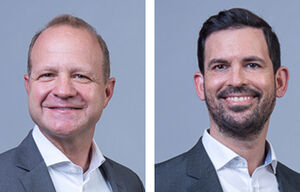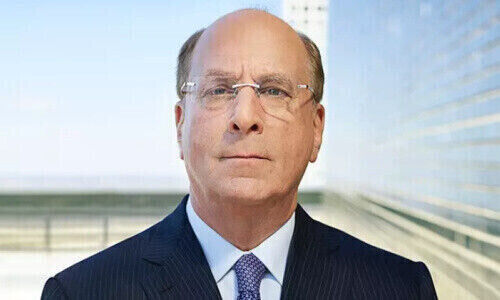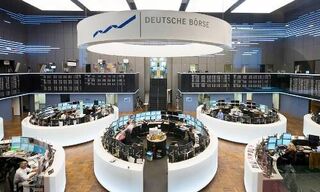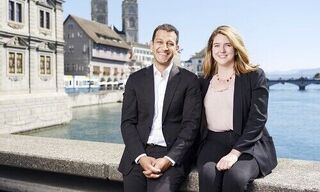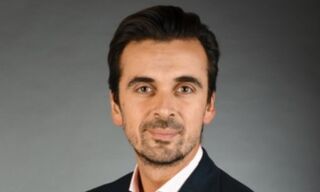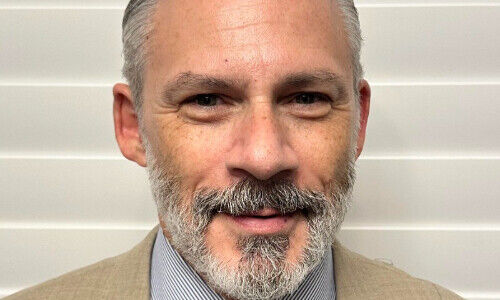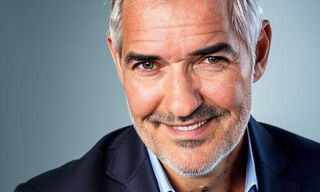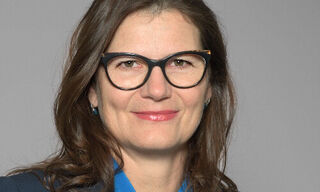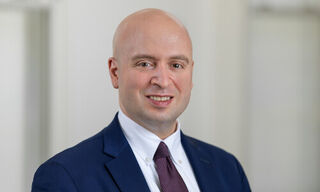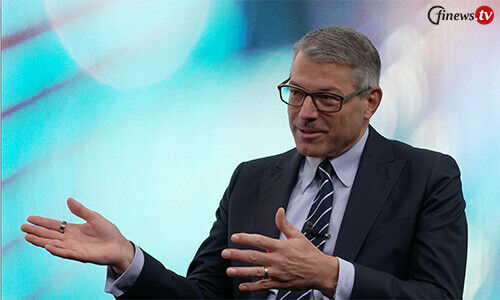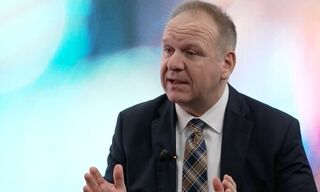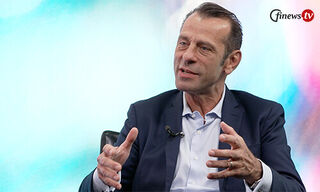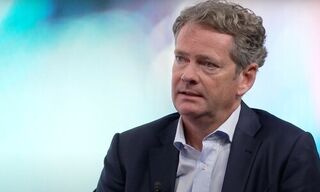Ludwig van Beethoven's story is a useful allegory for assessing the asset management industry today, Jean-François Hirschel writes in his exclusive essay for finews.first.
finews.first is a forum for renowned authors specialized on economic and financial topics. The texts are published in both German and English. The publishers of finews.com are responsible for the selection.
The challenge was monumental, and others might have simply given up. Not Beethoven. Instead he clenched the rod between his teeth so that when he pressed down hard on the piano keys he could feel a faint vibration. Guided by these vibrations and a vision of what he alone could offer his audience, Beethoven persevered. His majestic Ninth Symphony tugged at his audience’s heartstrings.
It was Beethoven’s finest hour. Living in a period fraught with revolution yet invigorated by enlightenment, his music was a mirror which reflected the upheaval of his time. Through perseverance, planning and purpose, Beethoven bequeathed a masterpiece to the world long after deafness had claimed him.
«Beethoven lived through seismic geo-political change just like our investment industry»
Having worked in the international asset management industry for 25 years, as Executive Committee member, head of marketing and product development at Unigestion and now as CEO of H-Ideas, I find Beethoven’s story a useful allegory for assessing the asset management industry today and decoding the keys to marketing and business success.
Beethoven lived through seismic geo-political change just like our investment industry has undergone in recent years. A slew of financial shocks have catalysed ever-stricter regulation and compliance requirements. Technological innovation is revolutionising our landscape – artificial intelligence, big data and machine learning are infiltrating the processes of investment management. The costs of remaining in the market (regulation, compliance) and being competitive in the market (keeping up with technology) have never been so high. One thing we can predict is that the pace of change will continue to accelerate, meaning that those firms who fail to keep up face the prospect of failure. It’s survival of the fittest as well as survival of the fastest.
«Both strategies miss the marketing ingredient that genuinely matters: connection»
Today Europe alone has over 4,000 asset management firms, operating from a diverse, culturally complex, set of sophisticated financial centres. These 4,000 firms offer 54,000 funds. Investors today truly live in a world of choice. How do we communicate with those investors? How do we stand out from the crowd? How do we make ourselves heard amongst the cacophony of our competitors clamouring for attention? How do we design our strategy and plans so that they meet our clients’ needs and goals?
Analysing the marketing output of today’s asset management industry two prevailing themes stand out: «me, me, me» and «jargon, jargon, jargon.» The «me, me, me» approach focuses on the asset management firm and is couched in the language of «we» do this or «we» do that. The «jargon, jargon, jargon» approach is heavy on technical, complicated, sometimes confusing industry vocabulary. Both strategies miss the marketing ingredient that genuinely matters: connection.
«We need to be more Beethoven in our marketing»
Beethoven was driven to succeed and to connect emotionally with his audience through his music. Likewise, those asset managers who succeed in the future will be those who connect with prospective and existing investors. The first step is to get inside the minds of our investors. What do we know about today’s investor?
- Delegated responsibility. With governments increasingly disengaging from solving retirement issues, investors have to assume more responsibility for managing this crucial period of their lives.
- Real-time knowledge. Investors can source quasi-immediate and complete information about you, your funds and your performance from the internet and social media so can be highly informed. But many may lack rigorous financial education so feel besieged by information overload.
- Scepticism. Financial crises and scandals have affected investors and eroded trust in the financial services industry.
- Overwhelmed. The industry is endlessly and noisily pushing its products onto potential investors. How can they make a decision?
We need to be more Beethoven in our marketing. If we could, in the words of celebrated novelist, E.M. Forster in his book «Howards End», «Only connect the prose and the passion, and both will be exalted,» and truly connect with potential and existing investors. Unfortunately our industry is particularly bad at connection. Why? Because our success is predicated on facts and figures, our yardsticks are investment rankings, performance and statistics. Consequently, it is natural and understandable that our marketing reflects our internal obsession with facts and figures.
«We realise that buying is always based on emotional triggers»
But we need to put ourselves aside and instead walk in our customers’ shoes. We need to think as our potential clients think. We need to understand their hopes and show that we can deliver. Likewise, we need to understand their fears and show that we are trustworthy.
We need to delve into the psychology of buying and when we do, we realise that buying is always based on emotional triggers. The art is to speak to your investors, not to speak about yourself. The art is to engage with your investors, not to blind them with technical language. The art is to show that you care about your investors’ wealth and that you are there to protect it and to grow it. That in a complex, challenging, convoluted world you care. For by caring you are sowing the seeds of connection, of trust, of loyalty. And these are the three pillars of longstanding success which will keep investors with you over the long term. It’s a different emphasis to the traditional business model predicated on costs, fees and performance. But just as, if not more, important.
Jean-François Hirschel is the CEO and founder of strategic marketing consultancy, H-Ideas.
Previous contributions: Rudi Bogni, Peter Kurer, Oliver Berger, Rolf Banz, Dieter Ruloff, Samuel Gerber, Werner Vogt, Walter Wittmann, Alfred Mettler, Peter Hody, Robert Holzach, Craig Murray, David Zollinger, Arthur Bolliger, Beat Kappeler, Chris Rowe, Stefan Gerlach, Marc Lussy, Nuno Fernandes, Richard Egger, Maurice Pedergnana, Marco Bargel, Steve Hanke, Andreas Britt, Urs Schoettli, Ursula Finsterwald, Stefan Kreuzkamp, Oliver Bussmann, Michael Benz, Peter Hody, Albert Steck, Andreas Britt, Martin Dahinden, Thomas Fedier, Alfred Mettler, Brigitte Strebel, Peter Hody, Mirjam Staub-Bisang, Nicolas Roth, Thorsten Polleit, Kim Iskyan, Stephen Dover, Denise Kenyon-Rouvinez, Christian Dreyer, Kinan Khadam-Al-Jame, Robert Hemmi, Anton Affentranger, Yves Mirabaud, Katharina Bart, Frédéric Papp, Hans-Martin Kraus, Gerard Guerdat, Didier Saint-Georges, Mario Bassi, Stephen Thariyan, Dan Steinbock, Rino Borini, Bert Flossbach, Michael Hasenstab, Guido Schilling, Werner E. Rutsch, Dorte Bech Vizard, Adriano B. Lucatelli, Katharina Bart, Maya Bhandari, Jean Tirole, Hans Jakob Roth, Marco Martinelli, Beat Wittmann, Thomas Sutter, Tom King, Werner Peyer, Thomas Kupfer, Peter Kurer, Arturo Bris, Michel Longhini, Frederic Papp, Claudia Kraaz, James Syme, Peter Hody, Claude Baumann, Dennis Larsen, Bernd Kramer, Ralph Ebert, Marionna Wegenstein, Armin Jans, Nicolas Roth, Hans Ulrich Jost, Patrick Hunger, Fabrizio Quirighetti, Claire Shaw, Michael Welti, Peter Fanconi, Alex Wolf, Dan Steinbock, Patrick Scheurle, Claude Baumann, Sandro Occhilupo, Claudia Kraaz, Will Ballard, Michael Bornhäusser, Nicholas Yeo and Claude-Alain Margelisch.



